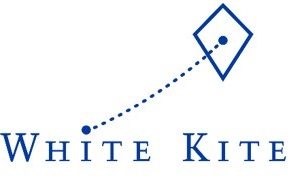White Kite was launched as a platform for the development of a wide range of predictive models in financial and operational domains.
What is a model?
We take the word “model” to mean two distinct things:
• A mathematical and/or statistical tool for problem-solving or forecasting
• An application or piece of software, often developed in Excel
These concepts fit together. As steps in the overall model-building process, one usually precedes the other.
Solving problems and building predictive models is almost always an analytic task, while building a platform is the deployment of that model in the real world. We work seamlessly from one mode to the other.
Risk Modelling
Problems where uncertainty surrounds one or more key factors are the focus of risk modelling. Building a properly-formulated model to analyse these problems is the discipline of risk modelling.
In some instances, the model itself is the objective; in others, the model is an intermediate step, a platform to analyse the problem. White Kite calls upon a wide variety of techniques and methodologies to develop risk models and actively uses them to deploy solutions. Typically, the problem is one of forecasting the probable limits of a process or system when it is operating under a range of conditions from ‘normal’ to ‘stressed’.
At the heart of any risk analysis is a model—or multiple models—of some description. The core model platform could be of any size or shape and produce a variety of outputs.
Some typical examples of models and their purpose:
• Models for simulating the value-at-risk (VaR) of a portfolio of assets
• Frameworks for predicting default severity in the credit risk context
• Simulations of cash-flows within a contractual structure (such as in a leasing model)
• Regression-based models providing ranges for valuation of assets
• System Dynamics models of global networks or systems, such as aircraft or ship fleets
• Market risk models for forecasting the effects of volatility
• Decision-support platforms for timing investments
• Bayesian models for capturing expert opinion on risk
• Statistical models of aggrega te insurance claims
In terms of models for specific domains, we perform a range of credit risk modelling and validation services, from Basel II compliance to advice on methodologies and model management. The team calls upon a wide range of basic and advanced methods to solve problems; analyse complex data; and build predictive models. White Kite has experience in using ‘non-parametric’ techniques to solve problems where the client has issues with data (for example, small samples and missing or conflicting data) or where a degree of approximation or expert input is required. We are also skilled in the development of large, intricate Excel-based applications that
combine elements of simulation and optimisation. These applications can be built as stand-alone, distributable platforms with an interface that ensures usability across a broad audience.
Methods we employ typically fall into one of the following broad categories:
• Statistical model building
• Statistical data analysis
• Optimisation
• Simulation
• Credit risk modelling (for Basel II)
• Portfolio risk modelling
• Forecasting
These methods are elaborated on further under the section on Methodologies.
